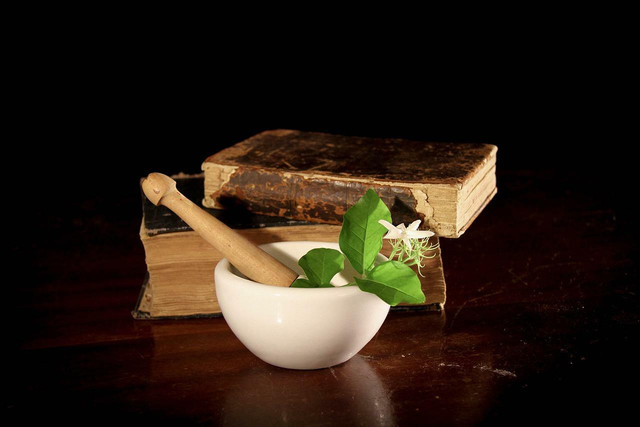Tension vs. headaches — do you know which one you suffer from? We’ll answer this question and provide some tips and remedies to help you deal with your headaches.
We all suffer headaches at some point and know how much they can affect us. People with tension or cluster headaches know better than most how debilitating headaches can be. Being in constant pain can lead to issues like depression and anxiety. Headaches rank third in disorders causing disabilities worldwide, with the global prevalence of headaches being 52 percent. But do you know the difference between a tension vs. cluster headache? Being able to tell them apart can help you treat the issue faster.
Tension headaches account for 26 percent of cases. Cluster headaches are less common, with a prevalence of 0.1 percent per 100,000 people. Headaches can disrupt your day and stop you from living your life. The differences between tension and cluster headaches are important for you to know. By figuring out which type of headache you suffer from, you can deal with it effectively.
What are Tension Headaches?

Tension headaches commonly appear in the afternoon as stress builds throughout the day. Patients describe tension headaches as having a clamp around their heads with pressure being applied. They generally occur when the neck, shoulders, and scalp become tense and cause mild to moderate pain.
Below is a list of known symptoms. Tension headaches are usually felt around the forehead area.
Common symptoms include:
- mild to moderate pain or pressure in the front, top, or sides of your head
- a headache that starts later in the day
- trouble sleeping
- feeling very tired
- irritability
- trouble focusing
- mild sensitivity to noise
- muscle aches
Unfortunately, there are no definite causes of tension headaches, but there are known triggers. These can be different for each person, but common triggers are:
- relaxing after stress
- anger
- bad posture
- strong perfume
- high-pressure weather
- teeth grinding
- bright lighting
- certain foods, such as cheese and fizzy drinks
- having sex
- ice cream
What are Cluster Headaches?



Cluster headaches appear when a facial nerve creates intense pain around one of your eyes. They are one of the most severe forms of headaches but are relatively uncommon. Cluster headaches may appear at the same time of the day or time of the year and are often mistaken for allergies.
They are usually a series of painful headaches that can be as short as 15 minutes or as long as three hours, but then they disappear. You’ll feel it behind or around one eye. It may spread to your forehead, temple, nose, cheek, or upper gum on that side. Your scalp may be tender. You can often feel your blood pulsing. Some people get them only occasionally, while others get them up to eight times a day.
There are no known causes for cluster headaches, but they can be triggered when you are in a cluster period, which is when you may get them more often. These generally last for several weeks to months. They tend to affect men more than women and can be more severe than migraine. They commonly start at around age 30 but can affect people of any age. Risk factors can be seasonal, lifestyle or genetic-based.
The pain usually starts suddenly, often around or behind the eye. You may notice:
- discomfort or a mild burning feeling
- a swollen or drooping eye
- a smaller pupil in the eye
- eye redness or watering
- runny or congested nose
- red, warm face
- sweating
- sensitivity to light
- restlessness or agitation, pacing
Tension vs. Cluster Headaches
Many factors differentiate tension headaches from cluster headaches, but relaxation can help you manage both more efficiently. Tension headaches generally come on slowly throughout your day, while cluster headaches will appear fast and reach their peak within five to 10 minutes.
Cluster headaches are usually predictable and appear at the same times throughout the day and year, whereas tension headaches can occur at any time. One of the most notable differences is the severity of pain, with cluster headaches being much more painful than tension headaches. Tension headaches can last up to seven days, but cluster headaches tend to stay up to three hours, come back three or more times a day, and recur for months.
Tips For Tension and Cluster Headaches



It is best to avoid the triggers that encourage tension or cluster headaches. One of the best ways is to manage stress effectively. If specific situations trigger your headaches, try to prevent them or minimize your exposure. Alternatively, if you can’t escape a stressful situation, you can try to manage it in a helpful way. For example, using:
- Meditation
- Breathing therapy
- CBT
- Yoga
- Exercise
It’s also essential to lead a healthy lifestyle. That might mean making changes to your diet or sleeping routine. Research shows a lack of sleep increases the prevalence of headaches. Similarly, studies also show high sugar diets and ones lacking in nutrients can increase the occurrence of headaches. You can find many resources online to help you with this effort:
- How to Fix Your Sleep Schedule: Most Effective Tips
- Why You Might Have a Sugar Headache (and Don’t Even Know it)
- 5 Tips for Dealing With Sugar Withdrawal
Herbal Headache Remedy
People with healthy and low-stress lifestyles can still experience headaches. In this case, it is a good idea to consider some natural remedies to fight them off. Here are a few to consider:
- Headache Home Remedies That Really Work
- Calming Tea: Varieties to Help with Stress and Anxiety
- The Best Herbs for Headaches and How to Use Them
Recently scientists have evaluated several natural herbs that can help with headaches. One of the key recipes uses a concoction of easy-to-find ingredients that you can pick up online or from your local farmers market or organic grocer. This recipe makes one cup.
Herbal remedy for headaches
Ingredients:
- 2 sprigs of rosemary
- 2 sprigs of sage
- 1 Lemon
- 1 drop of lemon balm tincture
- 1 drop of valerian tincture
- Sugar or sweetener (optional)
Instructions:
- Fill a cup with boiling water.
- Cut the rosemary and sage into small pieces and let them seep into the water for 10 to 15 minutes.
- Use a strainer to pour the infused water into a new cup.
- Cut the lemon in half and squeeze the juice into the water.
- Add the drops of lemon balm and valerian.
- Add sweetener to taste.
It is best to drink right away. It is not advisable to store the remedy as it is best when fresh.
Tension vs. Cluster Headache: Key Takeaways
Do your research and confer with a doctor when trying any natural remedy or making major lifestyle changes. Not all remedies are right for everyone, so experiment to find out what works best for you.
Try to pinpoint your triggers. Keep a diary or journal to learn what situations, foods, or environments make your headaches worse. That will help you to form a plan of action. It’s also worth noting any other symptoms you notice. The difference between a tension vs. cluster headache can be difficult to spot, but it is essential in finding the right solution.
Read more:
- How To Stop Acid Reflux At Night — Naturally
- How to Get More REM Sleep Naturally & Finally Feel Rested
- These Are the Best Plants for Your Bedroom & Sleep
Important Information regarding Health-related Topics.
** Links to retailers marked with ** or underlined orange are partially partner links: If you buy here, you actively support Utopia.org, because we will receive a small part of the sales proceeds. More info.Do you like this post?






